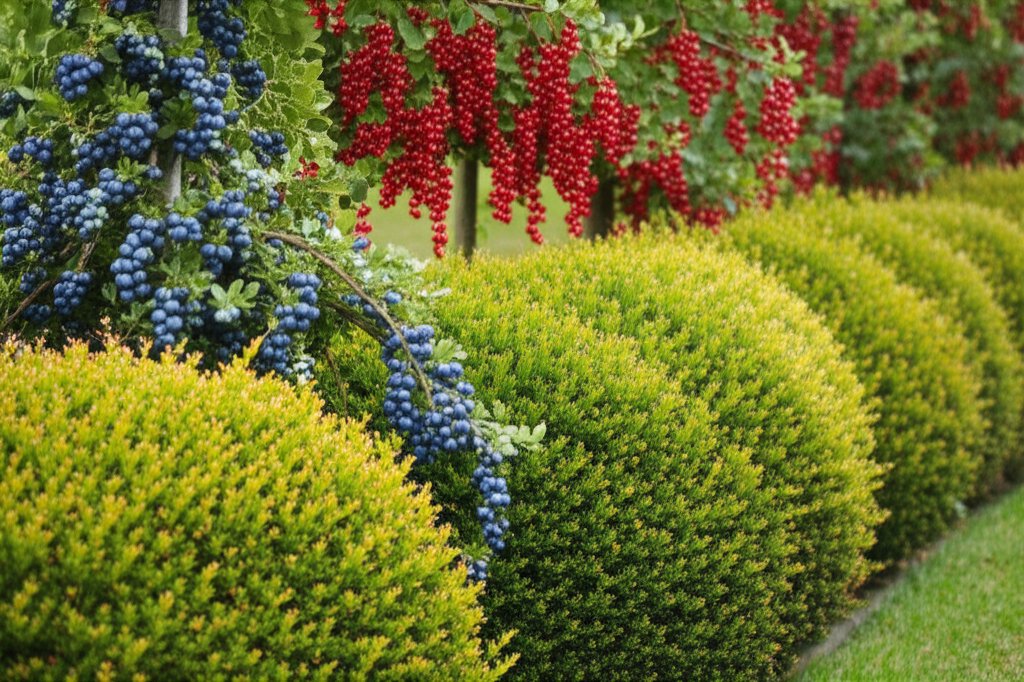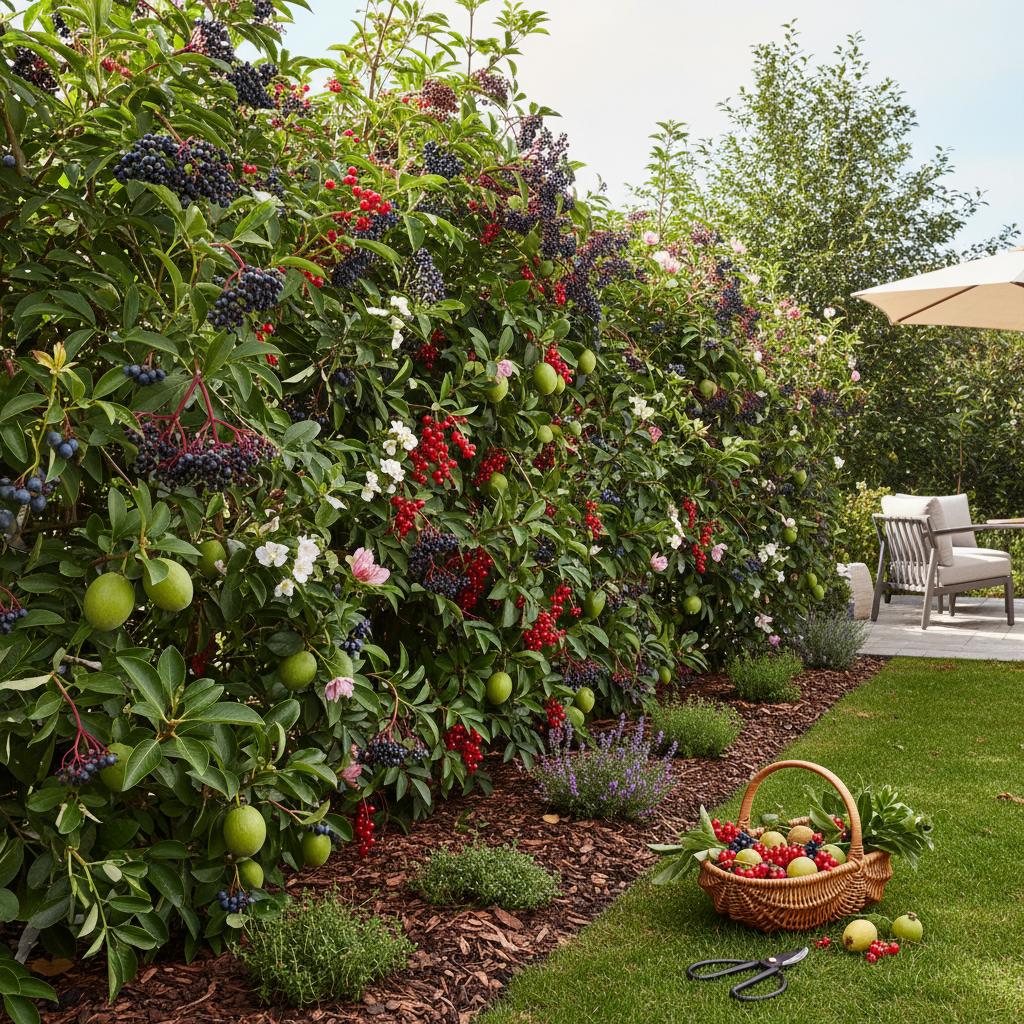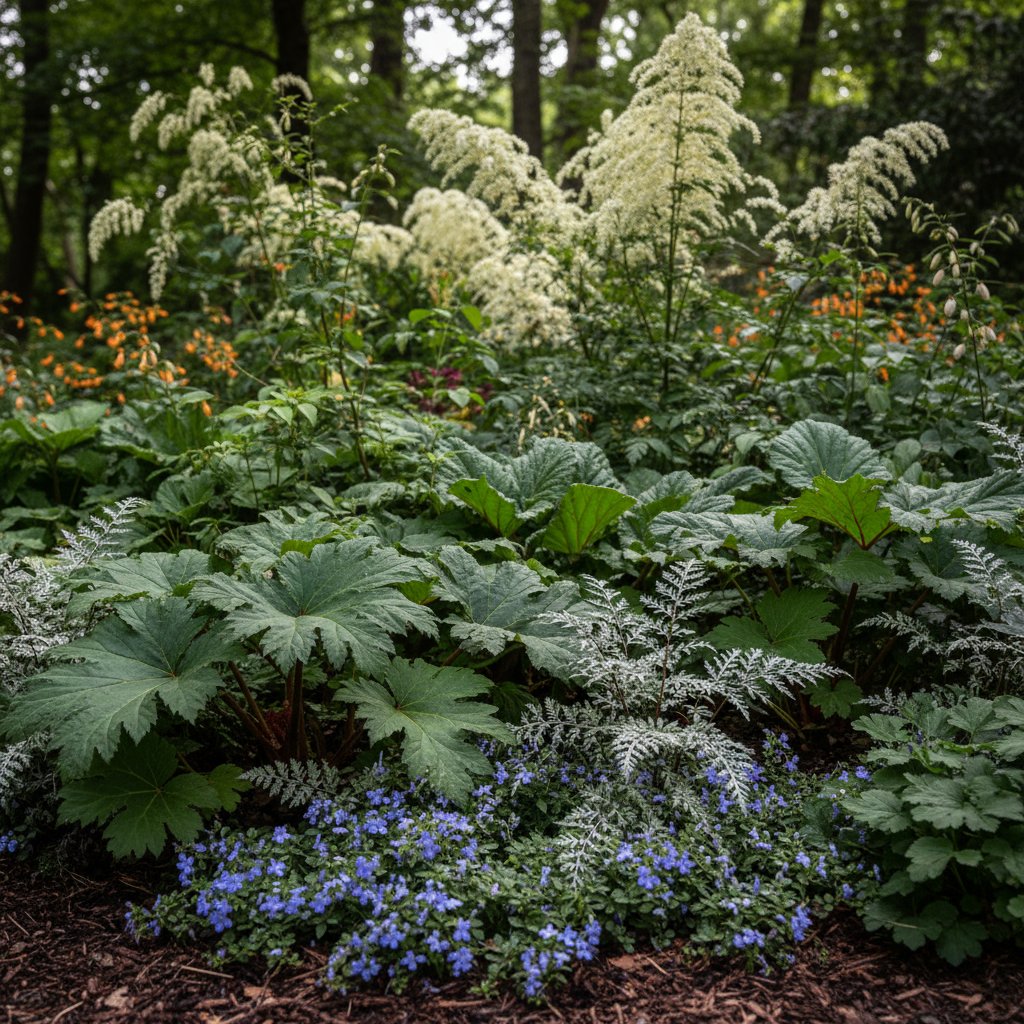Transform Your Yard: Swap Boxwood for Productive Fruit Hedges
Imagine strolling through your yard where beauty meets bounty. A classic boxwood hedge provides neat borders, but it remains unchanging year after year. What if you replaced it with plants that reward your efforts with fresh fruit? Fruit hedges bring this vision to life, blending structure with seasonal harvests.
Rethinking Traditional Hedges
Boxwood excels at creating formal edges. It stays evergreen and responds well to shearing. However, its uniformity can lack excitement in dynamic gardens. Fruit hedges change that dynamic. They bloom in spring, bear fruit in summer, and display fall colors. These plants draw bees, butterflies, and birds while offering edible rewards.
A fruit hedge maintains the boundary role of boxwood but adds layers of interest. Envision a row of blueberries outlining a flower bed or espaliered apples running along a fence. The shape remains controlled, yet the garden pulses with activity.
Choosing the Right Fruit Hedge
Pick plants based on your yard's needs, such as height, privacy, or ease of care. Consider your local climate, available sunlight, and soil type. Many options suit various conditions and deliver reliable results.
Blueberry hedges stand out for their adaptability. They thrive in acidic soil with a pH of 4.5 to 5.5 and need at least six hours of direct sun each day. White flowers appear in spring to attract pollinators. Berries ripen from June through August, varying by cultivar. Fall foliage shifts to red and orange tones. Plant mature bushes 2 to 3 feet apart to form a hedge 3 to 5 feet tall and 4 feet wide.
Currants and gooseberries offer compact alternatives. These reach 2 to 4 feet in height and handle partial shade well, ideal for spots near structures or under larger trees. Their jewel-like fruits, in red, black, or green, add sparkle. Thorny varieties protect nearby plantings from animals. Space them 1 to 2 feet apart in moist, well-drained soil boosted with compost.
Raspberries and blackberries create informal barriers. Provide stakes or a trellis system, planting canes 4 to 6 feet apart. Prune annually by cutting out old stems after harvest. Expect heavy summer crops. These work best for casual borders where a touch of wildness fits the style. Tie new growth to supports for neat access during picking.
Espaliered fruit trees deliver sophisticated results. Shape apples, pears, or peaches against walls or wires using dwarf varieties for limited spaces. They require 6 to 8 hours of sun. Prune in winter to guide branches horizontally. Fruits appear within 2 to 3 years, with blooms and harvests following in sequence.
Comparing Boxwood and Fruit Hedges
Think of this switch as evolving your garden's purpose. Boxwood prioritizes form and reliability. Fruit hedges emphasize cycles of growth and yield. Both define spaces, but fruit options engage your senses fully.
Texture and color: Boxwood holds a single shade of green all year. Fruit hedges transform: flowers in spring, colorful fruits in summer, and vivid leaves in fall. This progression keeps borders lively.
Maintenance: Shear boxwood 2 to 4 times a year for crisp lines. Fruit hedges need pruning too, but each snip encourages better production. You shape the plant's future rather than just its appearance.
Wildlife support: Boxwood offers little to local ecosystems. Fruit hedges provide pollen, seeds, and cover, boosting biodiversity even in city lots.
Durability: Boxwood lasts decades with routine care. Well-tended fruit plants match this longevity, producing for years while serving as focal points.
Installing Your Fruit Hedge
Begin small to test the approach. Choose one existing boxwood line or a pathway edge. Track how the new plants settle in and interact with your landscape. This phased rollout helps you learn specific care routines before committing fully.
Prepare the site by measuring mature plant sizes to prevent crowding. For blueberries, lower soil pH using sulfur or pine needles; add 2 to 3 inches of mulch to retain moisture. Set up soaker hoses for targeted watering, aiming for 1 inch weekly in dry spells. Focus efforts in the initial 2 to 3 years for strong roots.
Use one variety per hedge section for consistent height and ripening times. Reserve mixing for distinct areas to simplify upkeep.
Sustaining Shape and Yields
Prune with intention to balance form and fruiting. For blueberries, remove 3 to 5 oldest stems in late winter to refresh the bush. Currants and gooseberries benefit from summer cuts after harvest: shorten stems and open the center for airflow, which curbs fungal issues.
With raspberries and blackberries, remove fruiting canes at the base post-season and train fresh ones 6 inches apart on supports. Feed sparingly in early spring with a balanced organic fertilizer like 10-10-10 at half rate. Too much nitrogen favors leaves over berries. Check plants weekly for aphids or yellowing leaves; apply neem oil sprays or pH adjustments promptly.
This care routine feels rewarding. Every task ties directly to future harvests, keeping you connected to the garden's rhythm.
Blending Edibles into Your Design
Edible hedges fit any aesthetic, from structured to relaxed. A tidy blueberry line mimics boxwood formality along walkways. Raspberries add texture to fences, screening views while producing snacks.
Build cohesion through repeated elements like berry colors or plant heights. Layer in companions such as bee balm or mint at the base for extra pollinator draw. These additions weave function into beauty seamlessly.
Building Lasting Garden Connections
As seasons unfold, your fruit hedge becomes part of everyday routines. Spring flowers herald renewal, summer fruits invite gatherings, and winter prunes prepare for the next cycle. The border evolves from backdrop to active participant.
Birds and insects flourish, filling the air with life. Share the harvest with family or neighbors, turning the yard into a shared experience. Even clippings feed your compost pile, completing the garden's natural loop.
This change preserves definition while adding vitality. Cultivate borders that feed, inspire, and endure.
Getting Started with Your Hedge
Identify a boxwood section ready for refresh. Consult local nurseries for climate-suited varieties. Sample your soil for pH and nutrients; incorporate compost and adjust as needed for drainage.
Map sun exposure throughout the day to match plant needs. Plant in spring or fall, soaking roots thoroughly upon installation. Skip major pruning the first year to build strength.
Embrace the learning curve shaped by weather and methods. Over time, you gain a thriving hedge and sharper skills. Your yard shifts from ornamental to nourishing, enriching every visit.



